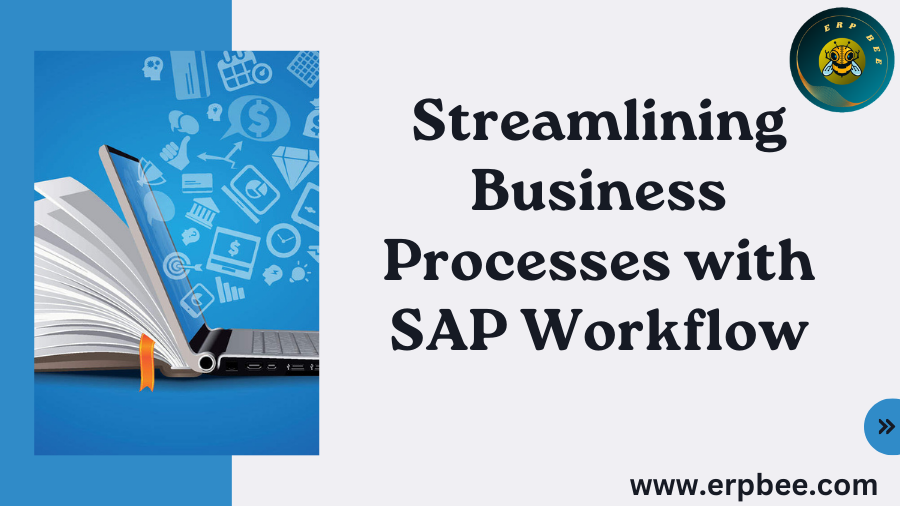Introduction: In today's fast-paced business environment, organizations need efficient and streamlined processes to stay competitive and deliver high-quality products and services. SAP Workflow is a robust tool provided by SAP to automate and optimize business processes, enabling companies to achieve greater efficiency, transparency, and accountability. In this blog, we will explore the key features, benefits, and implementation considerations of SAP Workflow and how it can revolutionize business operations.
What is SAP Workflow?
SAP Workflow is an integral part of the SAP Business Suite that automates and manages business processes in a structured and controlled manner. It facilitates the flow of information, documents, and tasks between different users or departments based on predefined rules and conditions. SAP Workflow provides a visual representation of the entire process, making it easier for users to understand and monitor the progress of tasks.
Key Features and Functionality
Process Automation: SAP Workflow automates sequential or parallel processes by triggering tasks based on predefined events or conditions. It ensures that activities are executed in the right sequence and by the appropriate personnel.
Flexibility and Customization: Work flow processes in SAP are highly configurable and can be tailored to suit specific business requirements. Organizations can design workflows to meet their unique needs, ensuring optimal efficiency and adherence to internal policies.
Notification and Alerts: SAP Work flow sends notifications and alerts to relevant users when specific events occur or tasks are assigned. This ensures that users are aware of pending tasks and can take timely action.
Integration with SAP Applications: SAP Work flow seamlessly integrates with various SAP modules, such as HR, Finance, Procurement, and Sales. This integration enables end-to-end process automation across different business functions.
Document and Task Routing: SAP Work flow routes documents and tasks to the right people for review, approval, or action. It ensures that the right stakeholders are involved in critical decision-making processes.
Real-time Monitoring: With SAP Work flow, users can monitor the status of tasks and processes in real time through a central dashboard. This transparency enhances visibility and enables quick identification of bottlenecks or delays.
Benefits of SAP Workflow
Improved Efficiency: By automating and optimizing processes, SAP Workflow reduces manual intervention and streamlines workflows, resulting in increased efficiency and productivity.
Enhanced Accountability: SAP Workflow assigns specific tasks to designated users, making individuals accountable for their assigned responsibilities. This fosters a sense of ownership and ensures tasks are completed on time.
Faster Decision-Making: SAP Wor kflow expedites decision-making by notifying users about pending tasks and approvals. This reduces the turnaround time for critical business processes.
Transparency and Compliance: SAP Workflow provides a transparent view of the entire process flow, allowing organizations to track every step of a process and ensure compliance with internal and external regulations.
Cost Reduction: By automating processes and minimizing manual intervention, SAP Workflow reduces operational costs and frees up resources for more strategic initiatives.
Scalability: SAP Work flow can scale to accommodate the growing needs of an organization. It can handle both simple and complex workflows, making it suitable for businesses of all sizes.
Implementation Considerations
Implementing SAP Workflow requires careful planning and consideration to ensure successful adoption. Here are some key implementation factors:
Process Analysis: Conduct a thorough analysis of existing business processes to identify areas that can benefit from automation. Determine the key objectives and goals of the workflow implementation.
Workflow Design: Design workflows with clear process steps, roles, and decision points. Involve relevant stakeholders in the design phase to ensure alignment with business requirements.
User Training: Provide comprehensive training to end-users to help them understand the new workflow processes and their responsibilities within the system.
Change Management: Implementing SAP Workflow may require a cultural shift in the organization. Establish change management strategies to gain buy-in from employees and minimize resistance to change.
Testing and Validation: Thoroughly test the workflows before deployment to identify and resolve any potential issues. Validate that the workflows meet the desired outcomes and business requirements.
Continuous Improvement: Regularly review and analyze the work flows to identify opportunities for optimization and enhancement. Solicit feedback from users to ensure continuous improvement of the processes.
Conclusion
SAP Workflow is a powerful tool that enables organizations to automate and optimize their business processes, leading to improved efficiency, transparency, and accountability. By streamlining workflows and reducing manual intervention, SAP Workflow empowers businesses to make faster and more informed decisions. Its seamless integration with SAP applications and flexibility in customization make it a valuable asset for organizations seeking to stay competitive and deliver exceptional products and services. Through careful planning, user training, and continuous improvement, SAP Workflow can revolutionize business operations and pave the way for future growth and success.
